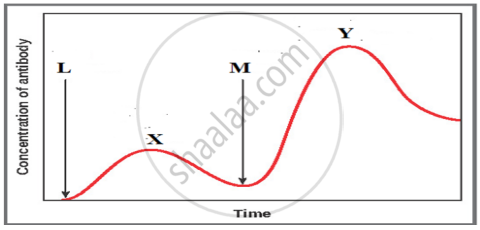Advertisements
Advertisements
प्रश्न
PCR is a useful tool for early diagnosis of an Infectious disease. Elaborate.
उत्तर
The specificity and sensitivity of PCR is useful for the diagnosis of inherited disorders (genetic diseases), viral diseases, bacterial diseases, etc., The diagnosis and treatment of a particular disease often require identifying a particular pathogen. Traditional methods of identification involve culturing these organisms from clinical specimens and performing metabolic and other tests to identify them. The concept behind PCR-based diagnosis of infectious diseases is simple - if the pathogen is present in a clinical specimen its DNA will be present.
Its DNA has unique sequences that can be detected by PCR, often using the clinical specimen (for example, blood, stool, spinal fluid, or sputum) in the PCR mixture.
APPEARS IN
संबंधित प्रश्न
Explain enzyme – replacement therapy to treat adenosine deaminase deficiency. Mention two disadvantages of this procedure.
How did an American Company, Eli Lilly use the knowledge of r-DNA technology to produce human insulin?
Expand the Given and mention one application of each:
PCR
Explain how insulin can be produced using recombinant DNA technology.
What is gene therapy? Name the first clinical case in which it was used.
Why does Bt toxin not kill the bacterium that produces it, but kill the insect that ingests it?
Give a schematic representation of the transformation of a pro-insulin into insulin.
Answer the following question.
Explain the various steps involved in the production of artificial insulin.
Describe the role of high temperature.
The first clinical gene therapy was done for the treatment of ________.
The genetic defect adenosine deaminase deficiency may be cured permanently by ____________.
What is genetically engineered Insulin?
If a person thinks he is infected with HIV, due to unprotected sex, and goes for a blood test. Do you think a test such as ELISA will help? If so why? If not, why?
What are DNA vaccines?
The hormone insulin is secreted by:
ELISA is based on:
When gene targetting involving gene amplification is attempted in an individual’s tissue to treat disease, it is known as ______
With regard to insulin choose the correct options.
- C-peptide is not present in mature insulin.
- The insulin produced by rDNA technology has C-peptide.
- The pro-insulin has C-peptide.
- A-peptide and B-peptide of insulin are interconnected by disulphide bridges.
Choose the correct answer from the options given below.
For effective treatment of the disease, early diagnosis and understanding of its pathophysiology is very important. Which of the following molecular diagnostic techniques is very useful for early detection?
What is a recombinant DNA vaccine? Give two examples.
Who was the first patient who was given gene therapy? Why was the given treatment recurrent in nature?
Taking examples under each category, discuss upstream and downstream processing.
How is a mature, functional insulin hormone different from its prohormone form?
How is a mature, functional insulin hormone different from its prohormone form?
When a foreign DNA is introduced into an organism, how is it maintained in the host and how is it transferred to the progeny of the organism?
Explain how recombinant human insulin was prepared in 1983 by Eli Lily an American company.
The graph given below indicates the administration of the first (L) and second dose (M) of a vaccine. The corresponding response of the body is indicated by X, and Y. Interpret the graph and explain the reason for such a response shown by the body.

Name the technique used to detect the presence of HIV in the body of an individual, Justify the principle associated with this technique.
